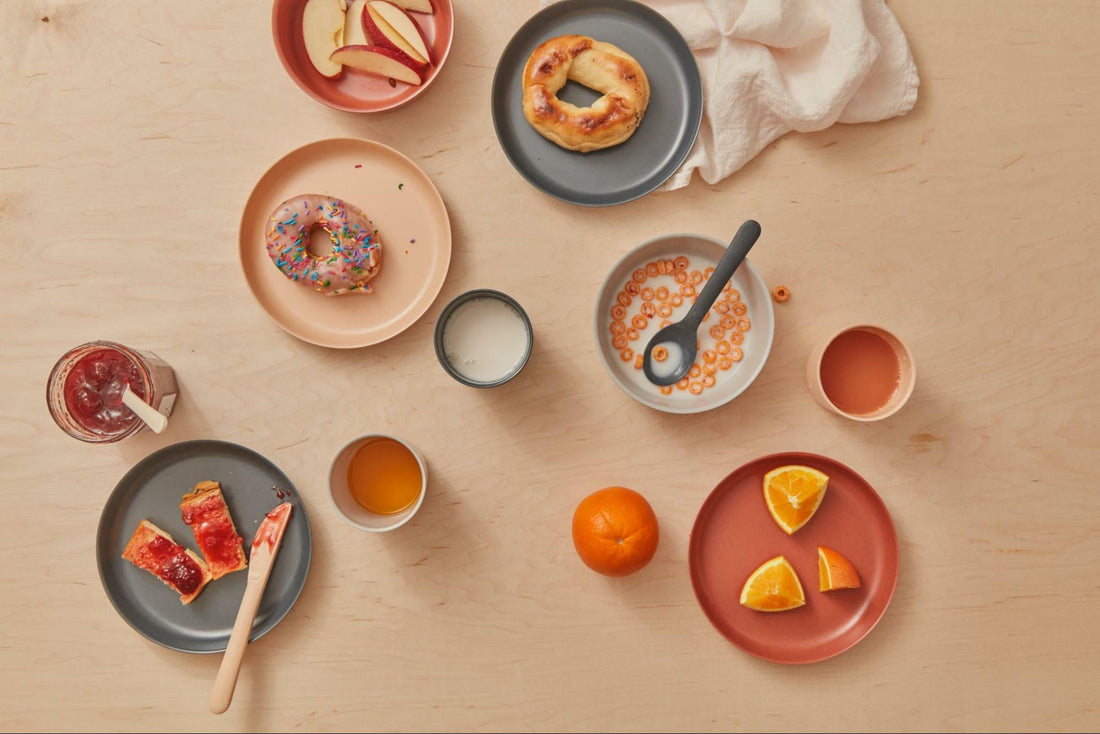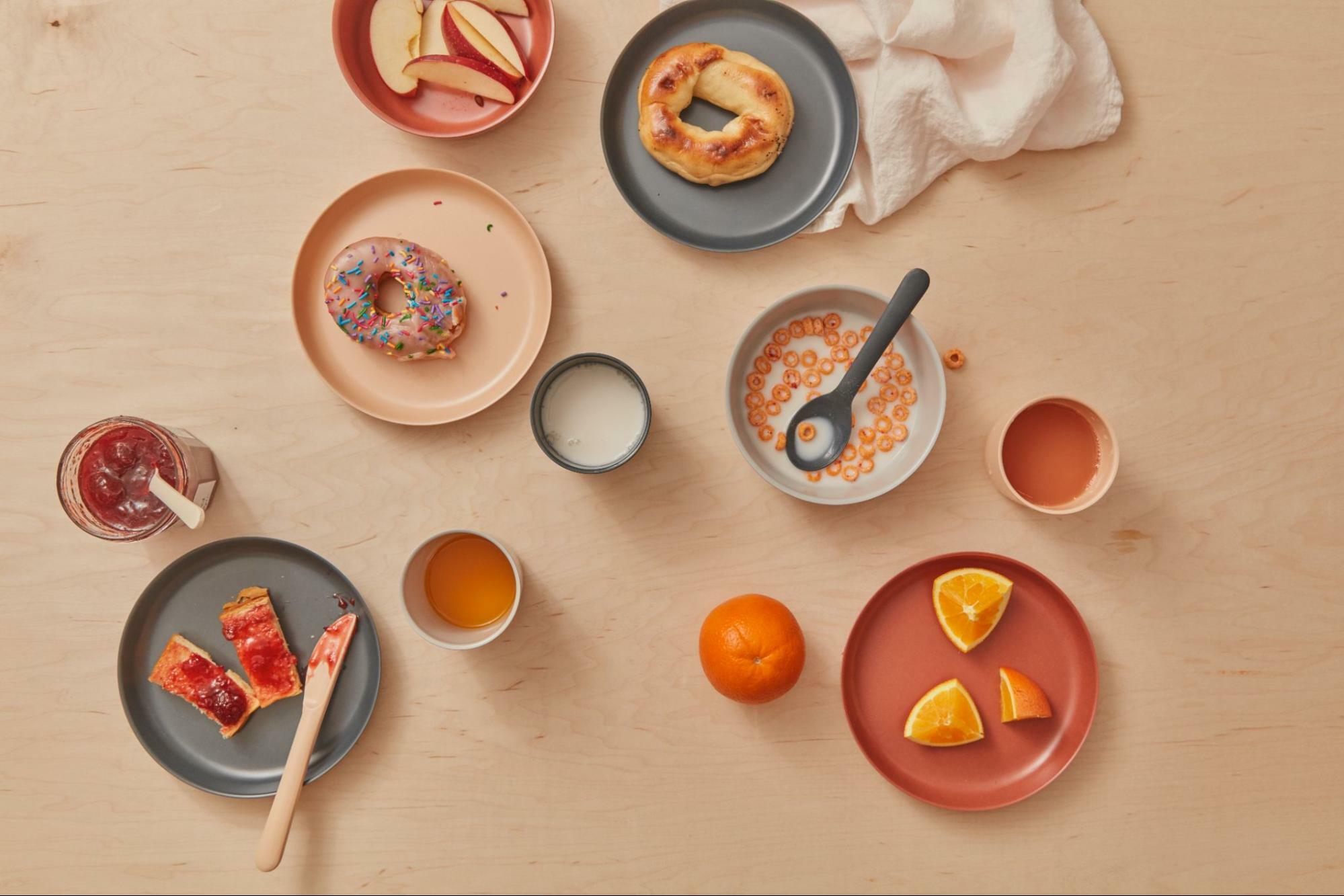
When starting to prepare non-staple food for their babies, parents also face the important moment of choosing tableware for their babies. There are many kinds of baby tableware materials. Which one should you choose that is best for your baby? What features should you pay attention to when choosing? This article will introduce the five key points in selecting baby tableware materials, compare common baby tableware materials, and finally attach the editor's carefully selected recommendations for baby tableware to help you solve all kinds of doubts about choosing baby tableware!
5 key points for choosing baby tableware, safety is the primary consideration
There is a dazzling array of baby tableware on the market, and you must pay special attention to "safety" when choosing it, because the baby's muscles are not fully developed, and it is difficult to control the tableware, and it is easy to knock over or injure himself. Therefore, when purchasing baby tableware, parents need to pay special attention to the following five key points:
Key points for choosing baby tableware 1》Simple shape
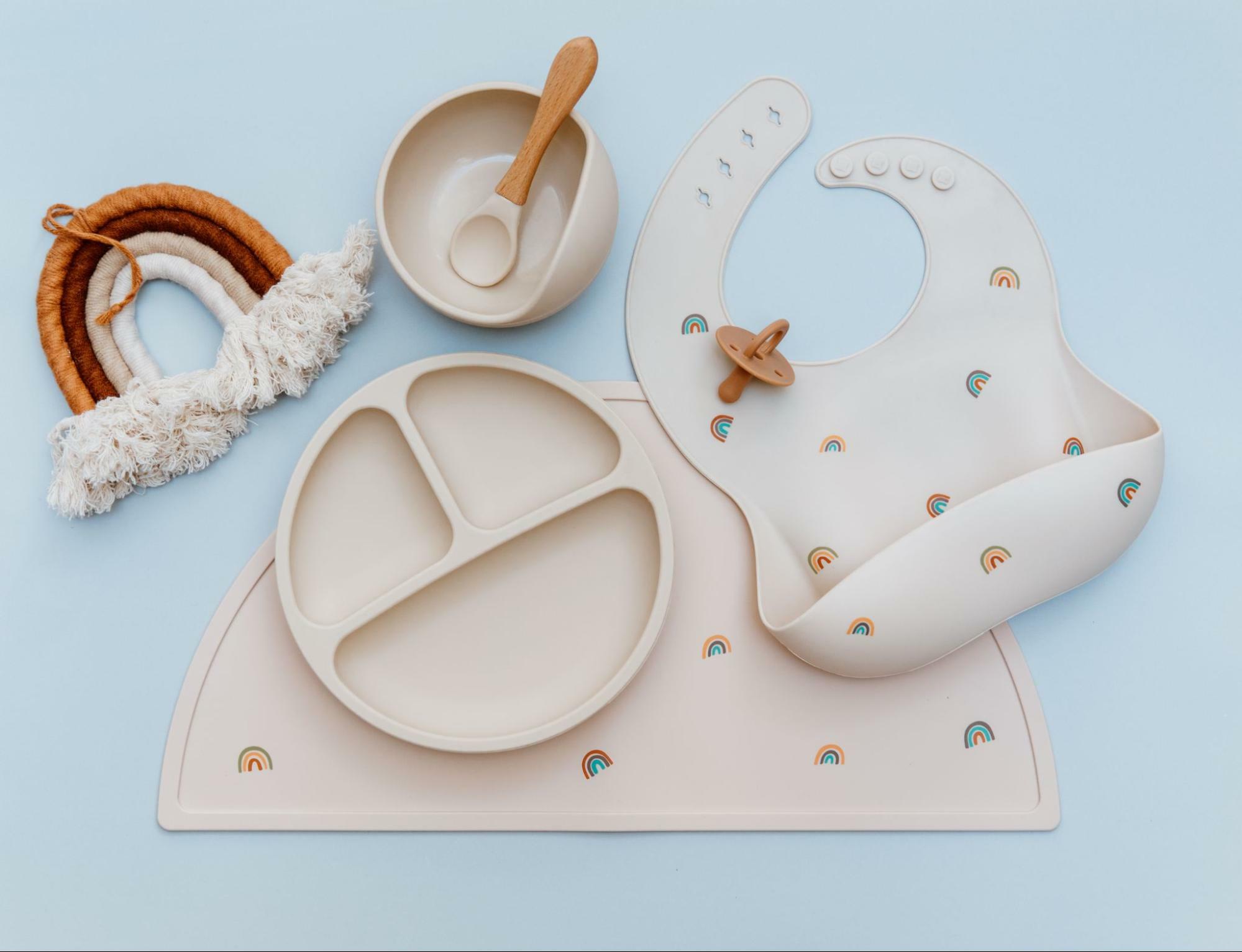
When choosing tableware and dishes for babies, many parents tend to choose tableware with special shapes or colors to enhance their baby's cognitive abilities. However, it is recommended that when choosing baby tableware, you should mainly choose styles with simple shapes. The main consideration is that simple baby tableware does not have too many and unnecessary protrusions, which is safer for the baby. Secondly, square, rounded corners and round shapes are easier to clean during cleaning. It is more convenient to use a spoon to scrape clean whether it is for sauces or non-staple foods with high viscosity.
Key points for choosing baby tableware 2》Absorbent and anti-slip bottom design
If you have a baby at home whose limbs are not yet coordinated, or who are particularly active, they will knock over the dishes more than once during meals, or even pick up the dishes and play with them. Therefore, many baby tableware are now designed with suction cups at the bottom, so that the dinner plate can be adsorbed on the dining table and not easily picked up. However, it should be noted that when parents take the suction cup tableware away from the table, remember not to let the baby see the action of tilting the corner of the dinner plate. Otherwise, after the baby with strong learning ability learns how to pick up the suction cup tableware, it will be difficult to prevent the baby from frequently picking up the suction cup tableware. After playing, such a function becomes meaningless.
Key points for choosing baby tableware 3》Tolerance to cleaning and disinfection
Cleaning baby tableware is very important, so in addition to using dishwashing detergent, many parents will use dishwashers, steam sterilizers, and even ultraviolet rays with stronger disinfection power to clean baby tableware. However, it should be noted that baby tableware made of different materials has different cleaning methods and conditions. If you clean it in the wrong way, it may shorten the life of baby tableware and even release harmful substances. It is recommended that parents understand the suitable cleaning methods for the material before purchasing.
Key points for choosing baby tableware 4》Restrictions on heating conditions
Generally speaking, baby tableware is mainly used to hold warm and cold food. After all, the baby's throat and mouth are still developing, so you should avoid eating food that is too hot. However, occasionally in order to heat food quickly and conveniently, it is necessary to put food into baby tableware and heat it. Therefore, before purchasing, you should also pay attention to whether the baby tableware is suitable for heating in an electric pot or microwave.
Baby tableware selection 5》Environmentally friendly materials
With the rise of environmental awareness, many parents are also inclined to choose baby tableware made of environmentally friendly materials to give their children a sustainable future through consumption behavior. In recent years, common environmentally friendly materials include natural polylactic acid (PLA) and bamboo fiber materials, among which bamboo fiber materials have been particularly popular in Europe in recent years because bamboo has a short growth cycle, fast growth rate, and does not need to be sprayed with pesticides during planting, making it an important source of raw materials for environmentally friendly products. Compared with common silicone, stainless steel and even plastic baby tableware, it has less impact on the environment.
4 common baby tableware materials, the advantages and disadvantages are not hidden and disclosed
After understanding the key points of choosing baby tableware, which materials of baby tableware on the market can meet the needs? The following introduces 4 common baby tableware materials so that you can fully understand them before making a choice:
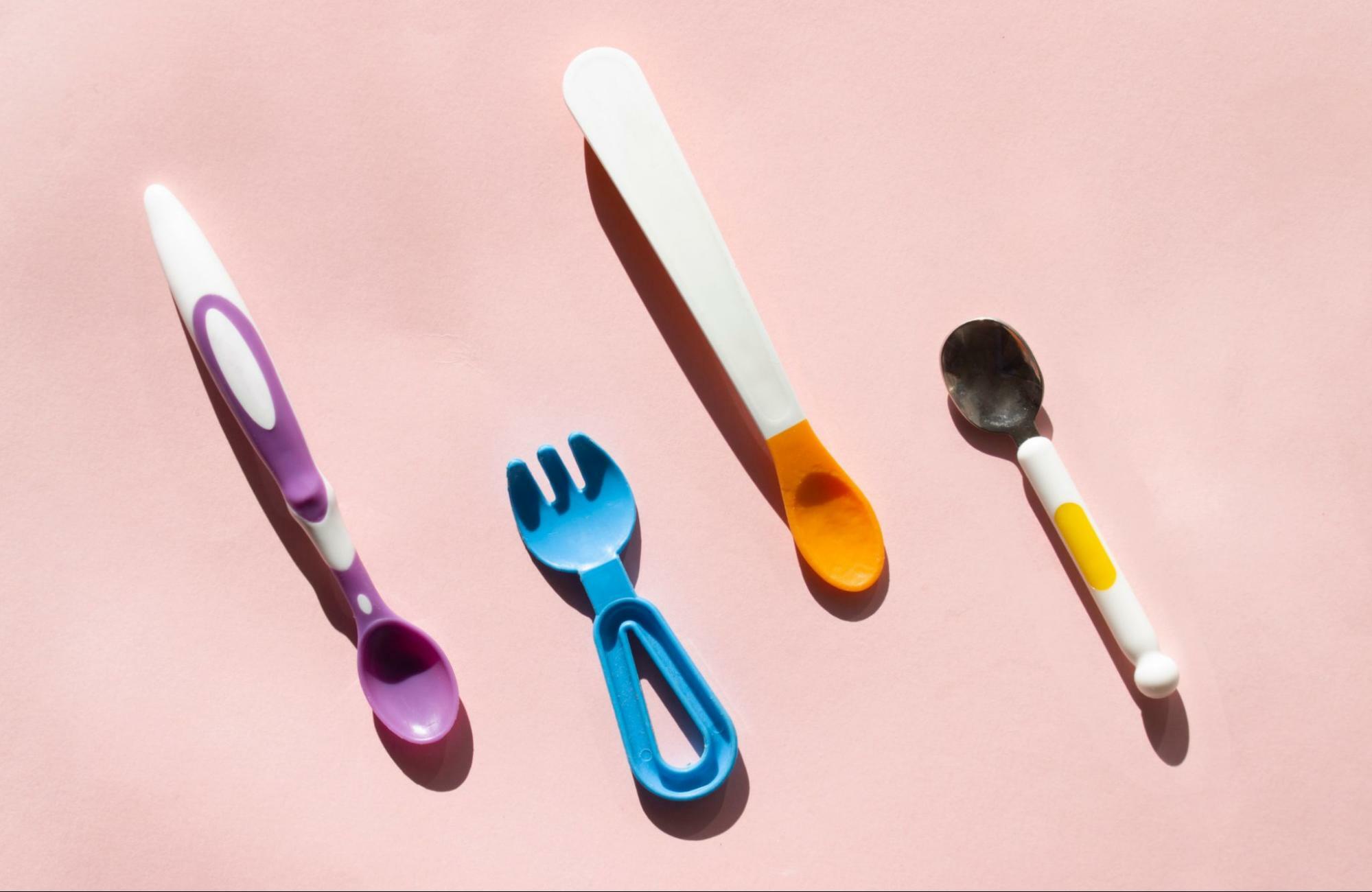
Recommended material for baby tableware 1: plastic
Plastic baby tableware includes three types: PP, PE, and Melamine. Among them, PP and PE are the most common materials for baby tableware, and PP has a higher heat resistance range than PE. Plastic baby tableware is characterized by being light, easy to carry, and not afraid of falling. It is not afraid of breaking if accidentally knocked over, and the price is affordable and easy to buy.
- Advantages: lightweight, low price, resistant to falling and not fragile, and high convenience.
- Disadvantages: It is easy to get scratched after being used for a long time, which makes it easy for food to remain inside and breed bacteria. It has poor heat resistance. Toxic melamine , plasticizers or environmental hormones may be dissolved after heating, which may have adverse effects on baby development and the environment. It is more suitable for holding cold food and needs to be replaced every six months.
Recommended material for baby tableware 2: silicone
The material of silicone comes from silicon dioxide, which is a natural mineral. Therefore, it is non-toxic and contains no heavy metals. It is a very safe material for babies. Many baby pacifiers are also made of food-grade silicone. Food-grade silicone is highly elastic, easy to fold, and very convenient to carry. However, special attention should be paid to the fact that the silicone surface is prone to residual smell and scratches, so avoid using a steel brush or vegetable cloth to clean it.
- Advantages: non-toxic, high temperature resistant, with a maximum heat resistance of over 200 degrees Celsius.
- Disadvantages: There are pores on the surface, which can easily absorb smells and stain colors. Using rough washing utensils (such as steel brushes and vegetable cloths) can easily cause the material to age.
Recommended material for baby tableware 3: stainless steel
Stainless steel tableware is very common in daily life. It is durable, heat-resistant and does not easily retain odor. It is an ideal tableware material for babies. However, when using stainless steel tableware, try to avoid serving hot food, or choose tableware covered with outer material to prevent scalding the baby. When selecting, it is best to choose 304 or 316 food grade stainless steel.
- Advantages: Not easy to retain food smell, easy to clean and not afraid of falling.
- Disadvantages: Good thermal conductivity makes it easy to burn your mouth and hands; stainless steel tableware may contain black oil residue . It is best to use white vinegar or dough to clean it before first use. Do not use strong alkali or strong oxidizing chemical detergents to clean the tableware. to avoid the production of chemicals.
Recommended material for baby tableware 4: Bamboo fiber
Bamboo fiber is a natural material that has become very popular in Europe in recent years. It is made from the original fiber of bamboo and can be recycled and decomposed. No harmful substances such as BPA , PVC or heavy metals are added in the production process. Coupled with the unique antibacterial properties of bamboo fiber, it can reduce the growth of bacteria and is an ideal recommended material for baby tableware.
- Advantages: recyclable and decomposable, environmentally friendly, contains no harmful substances, and bamboo has natural excellent antibacterial effects.
- Disadvantages: When purchasing, you need to pay attention to whether the material is 100% natural materials or whether it has obtained relevant food safety certification to avoid purchasing bamboo fiber products mixed with plastic.
Baby tableware material comparison table|Microwaveable and heat-resistant ranges can be sorted in one go
Compiled and compared the four types of baby tableware materials mentioned above, and listed the heat resistance temperature, whether it can be microwaved, whether it can be heated by an electric pan, and cleaning methods, etc., so that parents who are buying baby tableware materials for the first time can read this. Just look at the chart and you’ll have a good idea of what to choose.
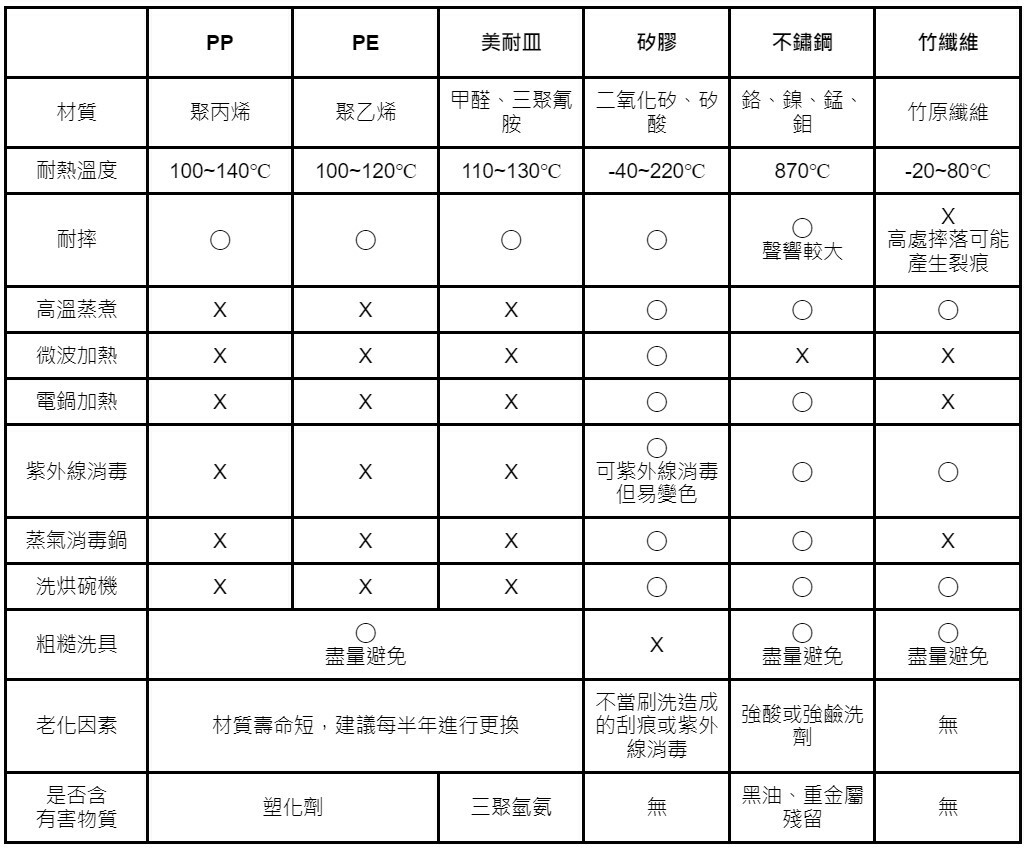
Recommended children's tableware brands|Banfubi EKOBO natural bamboo fiber tableware set
After you understand the material characteristics of various baby tableware, are you still worried about how to choose baby tableware? The following natural children’s tableware brand recommendation is a good choice for you! EKOBO is an eco-friendly baby products and household products brand from Paris, France. It specializes in designing eco-friendly products so that babies can grow with the environment.
The natural bamboo fiber tableware set developed by EKOBO is made of natural bamboo fiber certified by the FSG Forest Stewardship Council. It has passed the FDA test and the highest stoneware grade certification by the German LFGB. The natural non-toxic raw materials also have excellent antibacterial effects and are non-toxic. Harmful substances are added to make every bite your baby takes safe and secure.
Further reading:
EKOBO is created with love - a children's tableware brand trusted by mothers around the world

